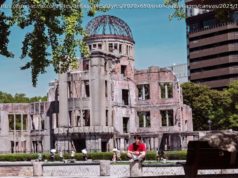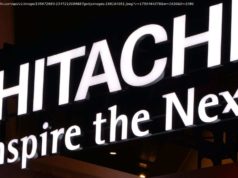Osaka, Japan’s third city, may be far from Tokyo in every sense, but here are 10 reasons travelers will want to spend some time there.
Romantic Kyoto may come a close second, or tropical Okinawa, but the Japan bucket list rarely includes rough-and-tumble Osaka. It’s Japan’s third-most-populated city, yet one that is often overlooked by overseas tourists.
Bayside Osaka — gutted by World War II bombing and rebuilt rapidly, haphazardly — certainly lacks the picturesque architecture and alluring natural scenery of other Japanese cities. And its enduring role as one of Japan’s economic command centers hardly seems like a reason to stir from your couch. So why visit Osaka at all?
We’ll tell you why — here are our top 10 reasons to head west in Japan:
Osaka’s nickname — Tenka no Daidokoro (the nation’s kitchen) — originally referred to its Edo Period status as Japan’s rice-trade hub. Nowadays, it refers to its reputation as a gourmand’s paradise. And okonomiyaki is arguably Osaka’s most famous dish.
Somewhere between an omelette and a pancake, okonomiyaki is customized with a choice of meat, seafood or noodles to create an infinitely variable classic.
Other Osaka staples include kitsune udon (thick noodle soup blanketed by fried tofu) and hakozushi (sushi pressed flat in a bamboo box; an edible tapestry) . Osaka’s quintessential street snack? Takoyaki — ball-shaped octopus fritters.
More adventurous diners may try tessa — sashimi made from poisonous fugu, or globefish. Certified chefs are trained to leave just enough poison to numb the lips, not stop the heart.
Despite having nearly 3 million inhabitants, Osaka manages to blend cosmopolitan hipness with country charm. Hit the slick Umeda neighborhood for lively nightlife when the sun goes down or get elbowed in Namba department stores by ruthless housewives out for a bargain during the day.
Dine at ethnic restaurants in the entertainment districts or visit old-school sushi joints tucked away in the alleys.
If you crave urban diversity but don’t feel like checking your sense of wonder at the door, Osaka is the place for you.
Bonus: tourist traffic is relatively low, so it’s easy to picture yourself as the star of a samurai movie as you drift between lush bamboo patches, creaky windmills and rustic barns.
Like a bizarre chimera, the Spa World complex in central Osaka rises from the smog and reveals its unholy blend of Japanese baths, Epcot Center and Vegas.
The “European Spa” zone features baths mimicking those of such places as Ancient Rome, Greece, Finland and Atlantis. We told you it was odd.
The “Asian Spa” pays tribute to Persia and Bali while including several kinds of Japanese outdoor pools. Spa World also has a gym, an amusement pool, whatever that means, a stone spa, a salon, a restaurant and, most helpfully, a hotel.
The working-class district of Tsuruhashi is home to Osaka’s Korea Town. The area clustered underneath the train tracks forms a labyrinth of Korean food and goods vendors.
Find all things Korean here, from hats plastered with Korean pop idols to pungent vats of kimchi or Korean wedding gowns. Locals instantly know they’ve arrived in Tsuruhashi when the train door opens and in floods the glorious smell of yakiniku, Japanese-style Korean barbecue.
In the late 1980s, civic leaders dreamed of creating a “City of Air” in Osaka in the form of four huge, interconnected towers in the Umeda area.
While offices occupy most of the Sky Building’s 40-story towers, the rooftop is home to a “floating garden” observatory inside a glass dome suspended between the towers. Underground, there are markets and restaurants designed to recall early 20th-century Osaka.
The 173-meter Umeda Sky Building is one of the most recognizable parts of Osaka’s skyline and, thanks to that rooftop observatory, you can actually take a stroll around it.
And the Kuidaore Taro — a drummer doll dressed as a clown — lives on Dotonbori, a bustling street in the heart of Osaka.
Originally found at Osaka’s celebrated Cui-daore restaurant, the Kuidaore Taro moved to a nearby shopping complex after the restaurant closed in 2008. He — like the giant mechanized crab welcoming diners to the Kani Doraku crab restaurant — remains a totem of the city.
Few things are more terrifying than the sight of a shark in the water … unless, of course, that shark is behind acrylic glass and reassuringly well fed.
After an afternoon at the aquarium, don’t miss the chance to enjoy a ride on the 112.5-meter-high Tempozan Ferris Wheel for a great view of Osaka.
Osaka’s reputation as a mercantile city goes even further back than its reign as the nation’s kitchen; the port city has been Japan’s commercial center for over a thousand years. So, what better way to Celebrate Osaka’s economic prowess than by hitting its many excellent shopping districts?
“Love the city, hate the people” is a familiar quip that simply doesn’t apply in Osaka — unlike, say, Paris and, er, Tokyo.
Osakans are renowned for being open, brash and, above all, funny (Osaka produces a good chunk of Japan’s comedians) . But they have a nutty streak, too.
In 1985, Hanshin Tiger baseball fans tossed a KFC Colonel Sanders statue into the Dotonbori River, partly to celebrate winning the Japan Series and partly because they thought the statue resembled American Randy Bass, their star player.
When the Tigers suffered a long losing streak following the drowning of the Colonel, the Legend of the Curse of the Colonel was born.
Tigers fans took the curse so seriously, numerous attempts were made to recover the statue by divers and through dredging the river, before finally succeeding in 2009.
Editor’s note: This article was previously published in 2012.






